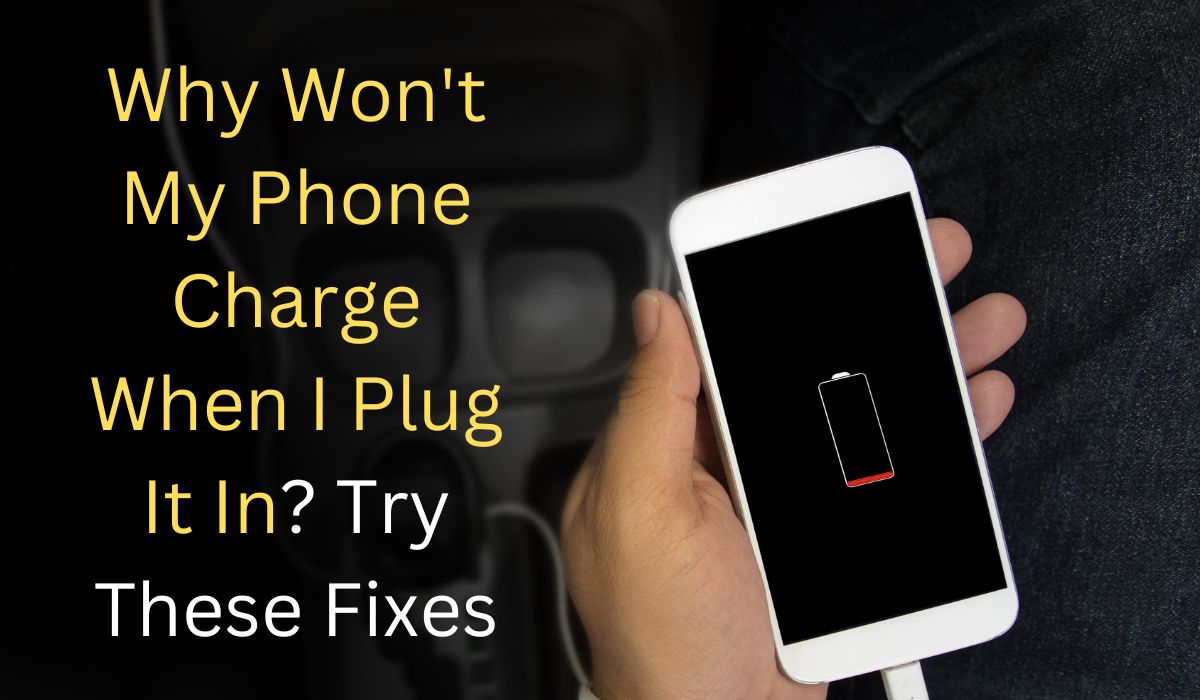A phone that refuses to charge when plugged in can be a frustrating experience. From faulty charging cables to software glitches, several reasons can contribute to this issue.
In this article, we’ll explore the common “why” behind this problem, delve into effective troubleshooting methods to fix it, and offer additional pro tips to ensure a seamless charging experience for your beloved device.
Why Won’t My Phone Charge When I Plug It In?
There are a few reasons why your phone might not be charging when you plug it in. Here are some of the most common causes:
- Damaged Charging Cable: A worn-out or damaged charging cable can disrupt the charging connection, preventing the flow of power to your phone.
- Dirty Charging Port: Accumulated dust and debris in the charging port can hinder the cable’s proper insertion, impeding the charging process.
- Faulty Power Outlet or Adapter: A malfunctioning power outlet or adapter may not supply the necessary power to charge your phone adequately.
- Overheating Issues: Phones employ safety measures to prevent overheating during charging. In such cases, the charging process might pause until the device cools down.
- Software Glitches: Software bugs or glitches can cause charging disruptions. Restarting your phone can sometimes resolve these issues.
- Battery or Charging Port Malfunction: In some instances, a malfunctioning battery or charging port may require professional repair or replacement.
- Incompatible Charger: Using an incompatible charger with different voltage or current ratings than your phone supports can lead to charging problems.
How to Fix the Issue to get back your phone charging?
Here are some steps you can take to fix the issue to get back your phone charging:
1. Check Charging Cable
Examine your charging cable carefully for any visible signs of wear and tear, such as frayed or exposed wires. Damaged cables can hinder the charging process and may need replacement. If you find any issues with the cable, consider using a new, certified charging cable that is compatible with your phone model. Using a high-quality cable ensures a secure and reliable connection between your phone and the power source.
2. Clean Charging Port
Over time, lint, dust, and debris can accumulate in your phone’s charging port, obstructing the connection between the cable and the device. To clean the charging port, first, power off your phone to avoid any potential electrical issues. Then, use a wooden or plastic toothpick (avoid using metal, as it may damage the port) to gently remove any dirt or debris. Be cautious not to apply excessive force, as the charging port’s pins are delicate. Once the port is clean, reconnect the charging cable and check if your phone starts charging.
3. Verify Power Outlet and Adapter
To rule out any issues with the power source, test your phone with a different power outlet or adapter. Sometimes, faulty outlets or adapters may not supply sufficient power to charge your phone effectively. Use a reliable power source that you know is functioning correctly, and ensure that the adapter is appropriate for your phone’s charging requirements.
4. Allow Phone to Cool Down
Overheating is a common safety concern during charging, and some phones have mechanisms to pause charging temporarily to prevent damage. If your phone becomes excessively hot during charging, disconnect it from the charger and allow it to cool down before attempting to charge it again. Avoid charging your phone in direct sunlight or near sources of heat to prevent overheating issues.
5. Restart Your Phone
Software glitches can sometimes cause charging disruptions. Restarting your phone refreshes the system and can help resolve these issues. Simply power off your phone, wait for a few seconds, and then power it back on. Check if the charging problem persists after the restart. Experts doing fast Samsung repair suggest checking your charging cable and adapter for any signs of wear or damage. They also recommend using original Samsung accessories to ensure optimal charging performance.
Additional Pro Tips
- Use Original Chargers: Stick to original or certified chargers to ensure compatibility and safe charging for your device.
- Avoid Extreme Temperatures: Charging your phone in extreme hot or cold conditions can impact battery health. Opt for moderate temperatures.
- Close Background Apps: Limit background activity and close unnecessary apps while charging to optimize the charging speed.
- Use Airplane Mode: Switching to Airplane mode while charging can speed up the process by reducing power consumption.
Conclusion
By following these detailed fixes, you can address common charging issues and potentially resolve the problem that prevents your phone from charging when plugged in.
If none of these steps work, there may be an underlying hardware issue, and seeking professional assistance from an authorized service center or a qualified technician is recommended.
Taking care of your phone’s charging components and using original or certified accessories can also help prolong the lifespan of your device and ensure consistent and reliable charging performance.

Comments are closed.